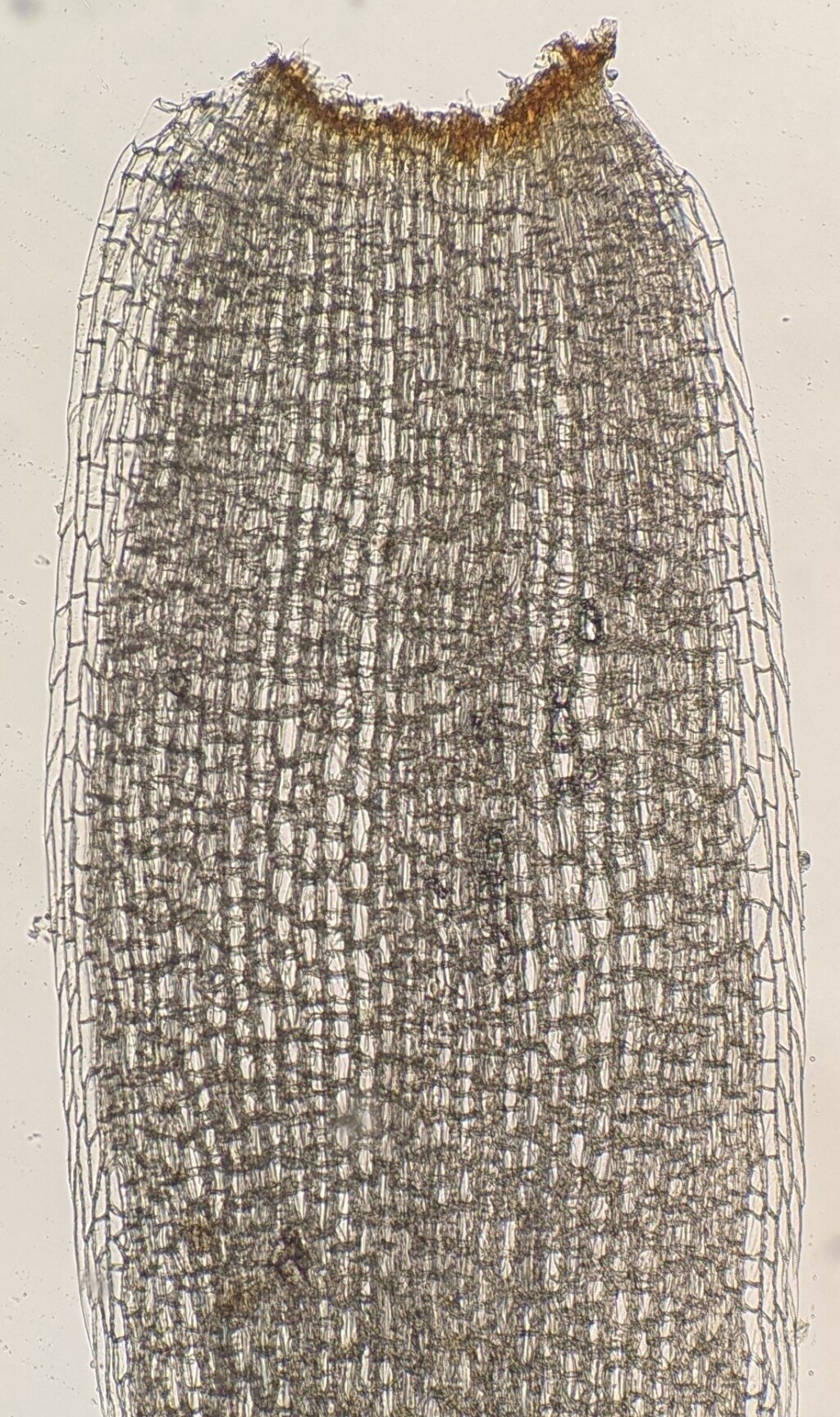Leucobryum
Dioicous (not in Victoria) or pseudoautoicous with dwarf males in basal rhizoids or on leaves of female plants. Asexual reproduction by caducous leaves. Pale or whitish-green turves, mats or cushions on logs, tree fern trunks, tree bases, rocks and soil. Stems erect, simple or forked, with rhizoids sparse at branch and stem bases and occasionally in leaf axils; central strand present (not in Victoria) or absent. Leaves ovate-lanceolate to linear-lanceolate, falcate-secund or erect to erect-spreading when moist, scarcely altered or becoming contorted near apex when dry; apex apiculate, acute or acuminate, without a hairpoint, sometimes bearing rhizoids; costa percurrent, occupying most of the leaf width and giving the appearance of being absent on first impression, composed of external layers of hyaline leucocyst cells interconnected by pores with narrower and single layered chlorophyllose chlorocyst cells enclosed by leucocysts or exposed to external environment adaxially at apex (‘Leucobryoid costa’); chlorocysts subquadrate to rectangular in longitudinal section, rhombic, trapezoid or triangular (not in Victoria) in cross-section; leucocysts in 1–several layers on either side of chlorocysts, except sometimes at apex, and extending to margin, quadrate to rectangular, becoming more elongate at margin, smooth, or prorate toward apex abaxially, with pores to external environment abaxially near apex and base; lamina restricted to near margins, broadest at base, completely composed of hyalocysts, unistratose except in alar region where multistratose; alar cells undifferentiated; margin entire or denticulate near apex (not in Victoria), plane to incurved. Perichaetial leaves similar size (not in Victoria) or much smaller than vegetative leaves. Capsule inclined to pendent, or rarely erect (not in Victoria), asymmetric, ovoid, ellipsoid or cylindric, sulcate when dry, often strumose, annulus present or absent (not in Victoria). Calyptra cucullate, with entire basal margin. Operculum rostrate. Peristome of 16 teeth, bifid in apical half.
On all continents except Antarctica, with around 80 species; one species in Victoria.
The whitish colour of the plants, especially when dry, and the distinctive ‘Leucobryoid costa’ makes Leucobryum one of the most recognisable and conspicuous mosses in the Victorian flora and is unmistakable for other moss.
 Spinning
Spinning


